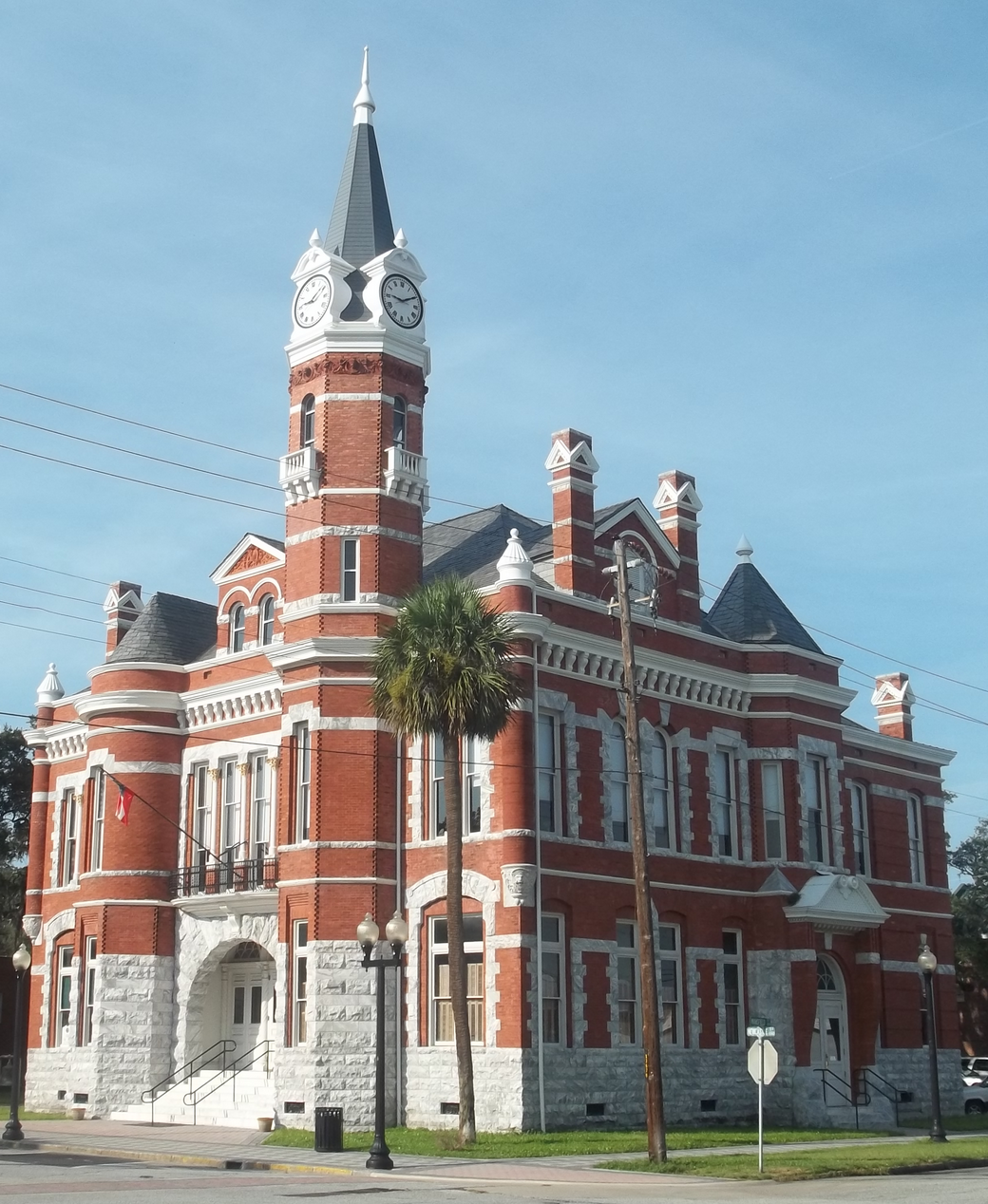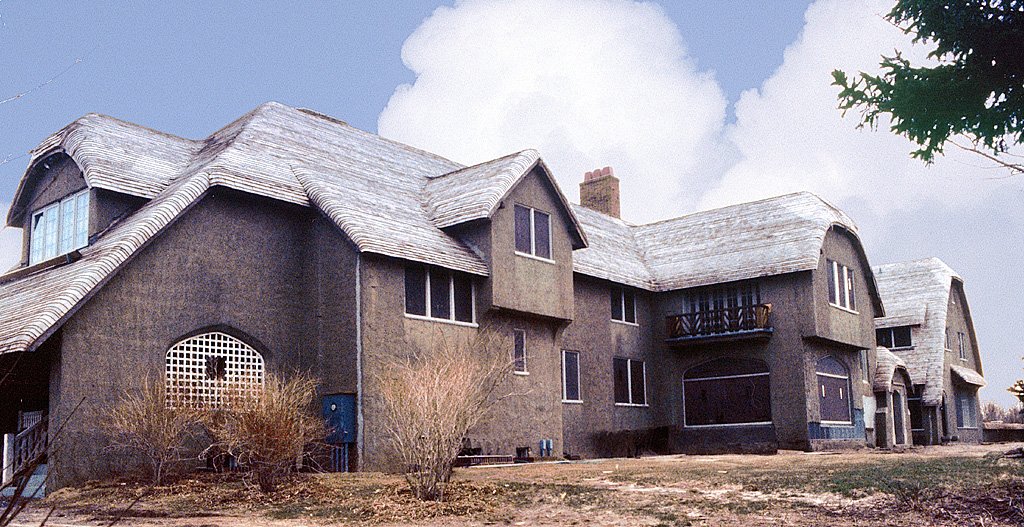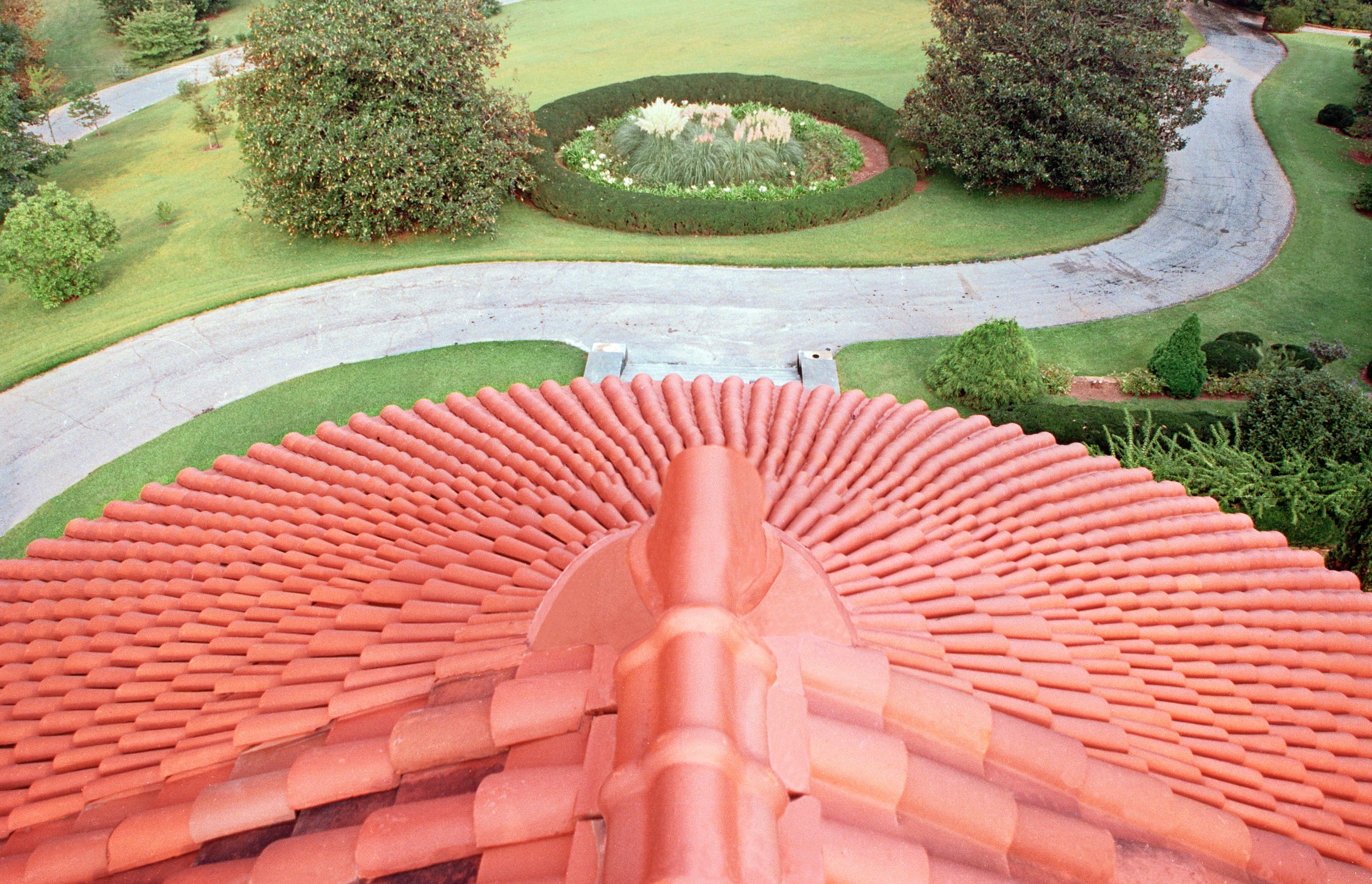Historic Roof Preservation & ResTORATION
Committed to Preserving Historical Roofs Across America.
History is worth protecting. Huber and Associates specializes in historical restoration and preservation of roofs — protecting buildings nationally and internationally that are architecturally, culturally and historically important. Our team has been restoring and preserving historical roofs for more than 40 years. In that time, we have partnered with homeowners, businesses, government agencies and heritage preservation societies, and gained a reputation as historical restoration experts.
Our team is experienced in working with many kinds of materials, such as Clay Tile, Copper and other Ornamental Metals, Slate, Thatch and Wood. In everything we do, we strive to create restorations that are as beautiful and durable as the original, maintaining fidelity to its core design principles while adding years of life by using modern techniques and materials.
We have previously worked on many historically designated properties, such as National Historic Landmarks like The Biltmore Estate in Asheville, North Carolina, The Bryce Canyon Lodge in Utah, and The Circular Congregational Church in Charleston, South Carolina to name a few. Follow the links on this page to view detailed case studies and learn more about how we can help you.
“We can’t say enough great things about your crew. Even though I know they are on a schedule we did not see them rush and miss details. This was extremely important to us and much appreciated!”
★★★★★
Protecting History With Roof Replacements
At Huber & Associates, when we complete a historic home roof renovation, our primary focus is on getting the colors, finishes and shapes right and providing durable construction to meet your building specifications and exceed your expectations.
Many of the roofs we restore are on buildings listed either as National Historic Landmarks or historic places on the Department of the Interior's National Register of Historic Places. The Secretary of the Interior nominates landmarks whereas state preservation offices nominate historic places — both signify that a property is part of our history and worth preserving for future generations to enjoy.
We have restored historic roofs on places of worship, plantations, private homes and public facilities including colleges, courthouses and museums. You can find our work from Hawaii to South Carolina and from Florida to Wisconsin.
Historical Roofing Case Studies
We have restored historic roofs on places of worship, plantations, private homes and public facilities including colleges, courthouses and museums. You can find our work from Hawaii to South Carolina and from Florida to Wisconsin. Two of our most notable projects include:
The South Carolina Historical Society
Huber undertook a notable roof restorations on the Fireproof Building — a National Historic Landmark located in Charleston, S.C. Currently the home of the South Carolina Historical Society, upon its construction in 1827, this building was designed to house public records for the city of Charleston. Our team was able to restore this aging building’s roof to its former glory by large custom flat lock copper roofing combined with areas of standing seam copper roofing.
The Biltmore Estate
Huber & Associates was also honored to perform a historical roof restoration on the Biltmore Estate, the largest private home in the United States and easily one of the most famous residences in the country. The Biltmore, located in Asheville, N.C., is notable for its Châteauesque-style architecture, which features a stunning copper roof.
Following a metallurgical analysis, our team determined that large sections of the roof would require rebuilding. To preserve its historical accuracy, we hand-formed 988 individual copper components to create a brand-new ridge.
A list of some of the historic preservation and restoration:
Other Historic Properties:
Old World Wisconsin Historical Site
Wilson Residence -- Hawaiian Register of Historic Places
Former Home of Humphrey Bogart
Charles H. MacNider Museum – Mason City, Iowa
Clarendon Farms Plantation – Beaufort, South Carolina
Castle Hill Plantation – Beaufort, South Carolina
College of Charleston, President's Residence – Charleston, South Carolina
Concordia College, President's Residence – Moorhead, Minnesota
Alabama Power Company, Martin Darn Power Plant Restoration
Gianni Versace Residence – Miami Beach, Florida
Brunswick Courthouse – Brunswick, Georgia
Chelsea Plantation – West Point, Virginia
Temple Emanu-El
Yellowstone Boathouse
National Historic Landmarks:
Biltmore Estate - Asheville, North Carolina
Circular Congregational Church – Charleston, South Carolina
William Blacklock House – Charleston, South Carolina
Bryce Canyon Lodge – Bryce, Utah
National Register of Historic Places:
Carbondale Courthouse – Carbondale, Pennsylvania
Arcadia Plantation – Georgetown County, South Carolina
Stan Hywet Hall – Akron, Ohio
Robert Allington Residence
Halidon Hills Plantation – Huger, Berkeley County, South Carolina
Dr. John Lining House – Charleston, South Carolina
The Fireproof Building – Charleston, South Carolina
MacBee House – Charleston, South Carolina
Michael Foucout House – Charleston, South Carolina
James Jervey House – Charleston, South Carolina
Owens / Thomas House – Savannah, Georgia
St. James Building – Jacksonville, Florida
Mattamuskeet Lodge – Swan Quarter, Hyde County, North Carolina
Volusia County Courthouse, Volusia County, FL
Volusia County Courthouse, listed on National Register of Historic Places
When Should a Roof Be Restored?
The age at which a roof should be restored depends on a variety of factors, including its material, age, how well it was installed and how well it has been maintained.
You also detect issues by inspecting the inside of your building. Water stains, mold or unusual odors could indicate potential roof problems.
If you are concerned, we would recommend examining your roof and after our examination, give you a report detailing our assessment and recommendations for either repairing, or replacing your roof.
What Kind of Historic Buildings Should Have Their Roofs Restored?
We believe the roof of any historic building should be preserved rather than replaced whenever possible. Examples of commonly restored historic buildings include:
Churches
Courthouses
Government buildings
Historical sites
Libraries
Lodges
Museums
National Park buildings
Plantations
University buildings
Bryce Canyon Lodge, National Historic Landmark
Why Choose Huber + Associates As Your Roofing Contractor?
Our previous work on noteworthy heritage properties is just one part of what makes us the best choice for any historical roof restoration or repair. We rely heavily on the strengths of our team to deliver exceptional results on projects of any size. Working exclusively with the best people has been the key to our success.
Our company was founded by Barry Huber and today consists of trained roof specialists, who are committed to quality and integrity for each project they encounter. Meet our team here.
Our history of completing challenging roof restoration projects has earned us both the praise of our customers and several prestigious awards. We are proud to have received the Griffin Award from the Preservation Society of Asheville and Buncombe County for our work on the north tower ridge cap of the Biltmore Estate.
Mr. Huber has also been an honored recipient of the National Roofing and Contractors' Association (NRCA) Gold Circle Award and more recently have won Master Craftsman Awards from both the Dade Heritage Trust and the Florida Trust for Historic Preservation.
Our Process
Each historical building is different — and restoring a roof requires a carefully considered, individualized approach. We begin each job with a careful consideration of your project’s requirements. In doing so, we develop a path to move forward in a manner that preserves as much of the original roof as possible, while adding modern upgrades that will improve its energy efficiency and durability for the future.
This can involve several steps:
Assessment: The first step in a historical roof renovation is to determine the location and extent of the damage. Often, wear and tear aren't immediately visible, so we may have to first remove tiles or other components to see underneath. We may also look inside for leaks and other signs of damage. Based on these findings and the expertise of our technicians, we strive to develop as comprehensive a picture as possible of the condition of your roof.
Research: When a roof has been significantly damaged or neglected, historical research can be a key part of the restoration process. We may also employ the use of historically accurate tools and materials when performing the restoration.
Repairs: How repairs proceed will depend mainly on the extent of the damage and the type of building materials involved. For copper and metal roofs, for instance, restoration involves removing individual elements, cleaning and repairing them as necessary, and reinstalling them. We will attempt to use original materials whenever such labor costs justify a long term result.
The first step in any historical roof restoration is to schedule a meeting with one of our experts. Call or email Huber & Associates with the details of your project to book an appointment at your convenience.
Our Expertise
Huber & Associates has experience working with a wide range of historical roofing materials, including:
Copper and ornamental metal roofing: Copper roofs are a fixture on many heritage homes, including the famed Biltmore Estate. Restoring copper roofing and ornamental metal fixtures requires removing the tarnishing that occurs over time, fixing dents and damage and, often, replacing the underlayment with more modern materials.
Slate: Slate roofs are exceptionally durable and, when properly maintained, don’t tend to wear out over time. However, individual tiles may become damaged or fall off. Restoring a slate roof requires sourcing or manufacturing replacement tiles that blend in seamlessly with the existing materials.
Clay roof tile: Clay is one of the oldest roofing materials in the world. Clay roof tiles come in a variety of non-standard shapes and sizes. Huber & Associates can source replacement parts or procure new clay tiles to meet the needs of your restoration project.
Our team of roofers also works with faux thatch, wood and copper roof materials. For more information about our historical roof restoration capabilities, get in touch with a representative today.
historical roof installation
Huber & Associates — protecting buildings nationally and internationally that are architecturally, culturally and historically important with over 40 years of experience. We have partnered with homeowners, businesses, government agencies and heritage preservation societies, and gained a reputation as historical restoration experts.
Trust Huber & Associates to build a roof that will protect the history you cherish. We treat every new project as a unique opportunity to deliver the best possible service for our clients. We invest the time to understand your requirements and create a detailed action plan and estimate for moving forward with repairs. Whether the job is large or small, count on us for unparalleled expertise in a variety of commercial historic roofing systems.
Want to learn more? Keep browsing our website for details about our services and history or request a quote using our online form. Please get in touch today.




































